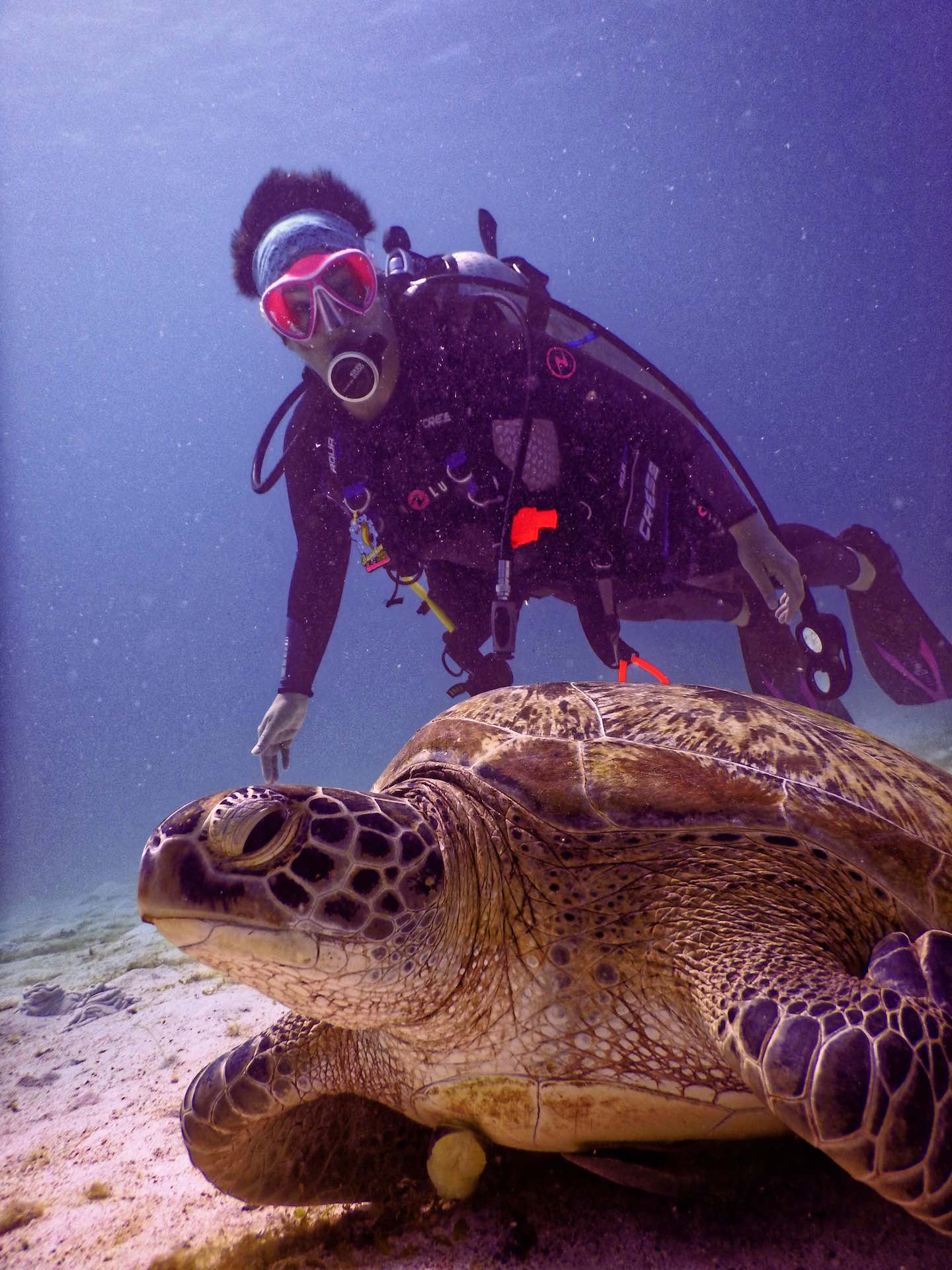In the face of microbial resistance and newly emerging infectious diseases, health authorities have declared travel health an important issue. Millions of people travel daily as tourism has becomes increasingly important for economic growth, development, jobs, cultural preservation, environmental protection, and recreation. While the ever-growing tour and travel industry may not shrink anytime soon, we as individuals can minimize the travel health risks. A proactive approach can minimize the risk of acquiring diseases. Read on to learn about why we get sick, what are the travel health risks, and what steps you can take to stay healthy during your next trip.
Contents:
QuickNav: Phases of travel
This advisory article is organized into advice applicable for the four different phases of travel. Click to the section of interest:
Why do people get sick during and after travel?
When we are out of our regular environment, we come across crowds of people – some of whom may be infected with a communicable disease – while traveling. Crowded places are a risk factor to infectious diseases.
“Increasing crowd density leads to … a higher number of individuals within the range of infection around an infected individual” - Goscé and Anders Johansson
During travel, there is also exposure to different varieties of microorganisms than those that we are exposed to at home. Additionally, we get to touch more surfaces which are possible source of contamination, such as doorknobs, money, tray tables in planes and trains, railings, etc. All these factors contribute to travel-related sickness.
A bit of general advice to prevent sickness during and after travel would be this: wash your hands frequently with soap and water, avoid eating street food, and have a bottle of water with you so to prevent getting water from a possibly contaminated source.
Factors likely to affect health during travel
Many travel-related factors are associated with health problems, such as:
- The travel destination.
- Mode of transport.
- Duration and season of travel.
- Purpose of travel as it relates to the behaviour of the traveller.
- Pre-existing health of the traveller.
- Non-compliance to pre-travel advice.
- Pregnancy.
- Standards of accommodation.
- Food hygiene, and sanitation.
These are all factors that may affect the health of the traveller.
Destinations with good water quality, clean accommodation, quality medical care, and high hygiene and sanitation standards are relatively less risky for traveller’s health as compared to destinations with a relatively poor health environment.

Travel health advice
Precautions necessary to protect health during travel can be generally divided into four stages corresponding to the lifecycle of your travel:
- Travel health precautions before departing for your travel destination.
- Travel health precautions during the journey to your travel destination.
- Travel health precautions after arriving at travel destination.
- Travel health precautions after returning to your home country.
Pre-travel advice on health
Pre-travel consultations with a travel health doctor can significantly lower the risk of health issues in a foreign country. The purpose of these consultations is to:
- Assess individuals’ risk to illness.
- Educate the traveller regarding health risk and methods of preventing illness.
- Provide medication for preventive treatment.
- Administer vaccines.
Travel health risks
The first step is to get acquainted with the anticipated and ubiquitous health risks present at the travel destination(s). Most pre-travel advice is specific to the health risks present in the area of travel. The World Health Organization (WHO) issues reports and warnings about epidemics – and even pandemics – in different geographic locations. It is important to regularly consult authoritative websites to keep up to date with the new risks that may emerge with time.
Travel health vaccinations
Vaccinations – often used interchangeably with the term immunization – are a highly effective way of preventing diseases. If successful, vaccination renders the vaccinated individual immune against the corresponding infective agent.
Travel vaccinations are different from routine vaccinations in the sense that they are specifically selected in reference to the country of travel and time duration before departure of the traveller. Nevertheless, the hospital visits for travel vaccination are a good opportunity for the doctors to assess routine immunization status of the patient; non-immunized or incompletely immunized individuals are offered routine vaccinations in addition to those required for travel purposes.
Take note that vaccines are not 100 percent effective for all recipients and the chance, albeit minor, to get infected is still there. It is for this reason that sticking to other precautions is equally important.
Frequently asked questions about travel vaccinations
Are vaccines required for international travel?
Yes, international travel exposes individuals to a risk of diseases that may not be highly prevalent in their home country. Generally, vaccines given for travel purposes are for diseases that:
- Are severe or life-threatening.
- Have a high global regional prevalence.
- Have a high perceived risk as compared to the real risk.
- Involve a public health risk.
What vaccines do you need to travel?
The selection of vaccines is based on the individual’s age, immunization history, travel destination, season of travel, length of stay, purpose of travel, pregnancy (or planning pregnancy), underlying medical conditions, and the total time available before departure. Commonly administered vaccines include:
- Cholera
- Hepatitis A
- Japanese encephalitis
- Meningococcal disease
- Rabies
- Diphtheria
- Tetanus
- Tick-borne encephalitis
- Typhoid fever
- Yellow fever
How long before you travel should you get vaccinations?
To allow sufficient time for optimal immunization, health professionals advise a pre-travel consultation 4-8 weeks before the date of departure.
What are WHO recommended vaccines for travel?
Again, the vaccine recommendation depends on traveller’s risk assessment. The World Health Organization does not provide a single immunization schedule for all travellers, but it does provide information on disease risks in various locations. Your healthcare provider will advise the appropriate vaccines based on the information released by WHO and National Health Authorities.
How long does a vaccine last?
The immunity duration of different vaccines varies. Some, e.g. measles vaccines, provide immunity for a lifetime, whereas others, e.g. the vaccine for pertussis, provide immunity for around 10 years. Boosters are offered for vaccines that do not provide lifelong protection.
Do you need vaccines for travel to Europe
WHO recommends vaccination against hepatitis A and B, typhoid, and rabies for travelers to the Western Europe. Routine vaccinations like MMR (Measles, Mumps, and Rubella), TDaP (Tetanus, Diphtheria, and Pertussis), and flu vaccine are also required. Regardless, other vaccinations may be mandatory based on present outbreaks and epidemics in your travel country.
Does insurance cover travel vaccinations?
Insurance plans vary, but many insurance providers do not cover travel vaccinations. It is best to check with your provider. Even if they do not provide this service, they may have a relevant package.
Travel health kits
Travel health kits include items to help a person in the event of unforeseeable health-related emergencies during travel. The contents of a basic medical kit include the following:
- Sterile dressings
- Antiseptic wound cleanser
- Over-the-counter (OTC) analgesics, such as paracetamol
- Antihistamine tablets
- Lubricant eye drops
- Insect repellent
- Nasal decongestants
- Oral rehydration salts
- Insect bite treatment
- Clinical thermometer
- Sunscreen
- Bandages
- Adhesive tape/strips
- Scissors
- Safety pins
Additional items based on travel destination and individual needs may include:
- Anti-diarrheal medicines
- Antibacterial ointments
- Antifungals
- Antimalarial drugs
- Mosquito nets
- Insecticides to treat the fabric
- Spare eyeglasses
- Water disinfectant pills
- Medicines for pre-existing health conditions
Our WHO reference is a comprehensive resource on how to make water safe to drink.

General tips on traveling with pre-existing medical conditions
Take note that sharp objects and more than 100ml liquid containers are not allowed in carry-on luggage and must be kept in checked luggage. If you are required to take liquid medicines during travel, it is wise to buy small sized bottles of your liquid medicines (less than 100ml) to be placed in carry-on luggage. Do not transfer the liquid drug into another container. The bottle should be original – manufactured and marketed by the pharmaceutical company.
Keep the contact details of your physician and all relevant health documents, such as a physician attested document certifying the necessity of carrying drugs and other medical items like syringes, to show to customs officials.
Travellers with fitted artificial metal devices, such as pacemakers and artificial joints, must also carry a letter from their doctor. Some of these medical devices are affected by security screening equipment and so a letter is essential to prevent security issues.
Take double safety precautions against loss or theft; have a duplicate supply of medicines, one kept in the carry-on luggage and the other in the checked luggage.
Travel health apps
Various mobile applications help you quickly calculate the number of medicines required during travel. These apps also provide an option to set reminders about taking medicines while you are away from home. Intrepid Pillbox is one such application. You can download it here for free.
Malaria
There are more than 100 countries where non-immune and semi-immune travellers are at risk of malaria transmission. Interestingly, as per a book by World Health Organization: International Travel and Health, these areas are travelled by more than 125 million international travellers every year. However, the risk could be significantly reduced with simple health protection measures.
There are four principles – ABCD – of malaria prevention in traveller’s case.
- Be aware of the risk and main symptoms of malaria.
- Avoid mosquito bites.
- Start chemoprophylaxis (use of antimalarial drugs to prevent malaria) when advised by a doctor.
- Seek immediate diagnosis and treatment if fever develops in a week or more after reaching high-risk malaria destinations.
Keep health in mind while packing your clothes for travel. Take along long shirts, long pants and a hat to prevent mosquito bites.
Travel health advice for the day of travel
Air travel, especially long-distance flights, exposes the traveller to a number of health risks, which are easily preventable if one plans carefully. Travellers with pre-existing health conditions are advised to consult their healthcare provider well before the travel day; their doctor would inform them about all necessary precautions they should observe regarding their particular medical condition. Other precautions regarding air travel are discussed below.
Airplane ear
Regardless of how much travellers pay for their seat, ear pressure pain and popping are unavoidable aspects of travel. Normally the air pressure in the inner ear and outer environment are almost the same, but that changes when a person is flying. When the plane takes off, the change in altitude – and hence the change in air pressure - occurs so rapidly that a traveller is not allowed enough time to have the air pressure inside the ear and outside of it to equalize. This imbalance of air pressure inside the ear and the outer environment is the cause behind airplane ears.
Yawning, swallowing, or chewing gum help improve the symptoms. If these methods don’t work, try the Valsalva manoeuvre, i.e., expire forcefully through the pinched nose and closed mouth. Infants usually benefit from feeding or a pacifier, which stimulates swallowing.

Humidity in aircraft
Aircraft cabins usually have low humidity (below 20%), whereas your humidity at home would vary, but for many people it would normally be above 30%. Although low humidity doesn’t pose a significant health risk, it may cause dry skin and discomfort to the eyes, nose, and mouth. Use moisturizing lotion to avoid skin dryness and a nasal spray to moisten the nasal passage. Apply Vaseline to the lips and avoid wearing eye lenses during travel. Instead, opt for eyeglasses.
Motion sickness
Travellers rarely experience motion sickness, except when there’s severe turbulence. Nevertheless, if you are prone to motion sickness, ask for a seat in the middle section of the cabin. Movements are less pronounced in this area. Moreover, avoid drinking alcohol during flight and for one day beforehand. Also, keep motion sickness medicines and barf bag with you.
Immobility and circulatory problems
Prolonged sitting can cause pooling of blood in the lower extremities. This may result in swelling, stiffness, and discomfort. Immobility is also known to cause Venous Thromboembolism (VTE).
WHO on VTE
The WHO Research into Global Hazards of Travel (WRIGHT) was conducted to access the risk of VTE during air travel. The research concluded that a long-haul flight (>4-hours) doubles the risk of VTE. Out of 6000 passengers, an average of 1 person gets VTE after a long-haul flight. The risk increases with time duration of the flight, the frequency of travel within a short period, and presence of other travel-related VTE risk factors, such as obesity, use of contraceptive pills, history of VTE, recent surgery, and some genetic blood-clotting abnormalities.
Precautions to prevent VTE
- Move around the cabin during a long flight. It may not be always possible, so you can also swap this with a regular trip to the bathroom every 1-2 hours.
- Avoid placing hand luggage in a place where it will restrict movement of the legs.
- Many airlines provide advice on seat-limited-exercises to prevent VTE. Use these exercises to improve the circulation in the legs and prevent fatigue and stiffness.
- Travellers at particularly high risk of VTE must consult their travel doctor, who may prescribe them medicines to prevent this issue.
Considerations for underwater divers
Holiday travellers who are set on some underwater fun once they reach their destination need to plan carefully around their travel itinerary. It is advisable to avoid diving for at least 12 hours before the next flight because reduced cabin pressure may lead to decompression sickness.

Travel health advice to follow after reaching your destination
Various health risks may be present in your travel destination. The prevention strategies to avoid such risks are divided here in accordance to environmental health risks, infectious diseases, and injuries.
Environmental risks
A sudden change in environmental conditions, such as a change in altitude, temperature, humidity, microbes, animals, and insects, may have poor effects on a travellers health. Environmental risks include the following:
High altitude
Travellers who are unaccustomed to high altitudes may develop High-Altitude Illness (HAI), especially if they go above 2750 m. There are various forms of HAI, including:
- Acute mountain sickness (AMS)
- High-altitude pulmonary oedema
- High-altitude cerebral oedema
The last two conditions are uncommon, but potentially fatal. HAI susceptibility is primarily genetic, but to prevent AMS, travellers should avoid one-day travel to sleeping altitudes over 2750 m; they should break the journey for one or two nights at 2000-2500 m.
Just like a change in altitude, sudden changes in temperature and humidity could also affect health adversely. High temperatures cause dehydration that must be prevented with consumption of adequate fluids.
Fungal infections
Fungal infections like athlete’s foot are likely to develop and aggravate in hot and humid conditions. Taking a daily shower with soap, wearing loose cotton clothing, and applying talcum powder to sensitive areas of skin can help to reduce the development and spread of fungal infections.
Food and waterborne illnesses
Not all countries have high food and water quality. Contaminated food and water increases the risk of cholera, cryptosporidiosis, campylobacteriosis, giardiasis, hepatitis A and E, listeriosis, salmonellosis, shigellosis, traveller’s diarrhoea, and typhoid fever. Here are some tips on how to minimize the risk:
- Do not buy street food.
- Use clean drinking water.
- Always comply with the posted rules and regulations in recreational water areas.
- Avoid going in dirty lakes and ponds that have a clear likelihood of being infected with microbes.
- Do not ingest water from recreational lakes.
Mosquitos and other insects
Insect bites are a major cause of infectious diseases during travel. Serious diseases that spread by mosquitoes are yellow fever, malaria, and dengue fever. The risks around these vary by region:
- Yellow fever is common in Central America, South America, and Africa.
- Malaria risk is high in Africa, Asia, and South America.
- Dengue fever occurs in urban centers in tropics.
More information on high-risk areas can be taken from WHO and Australian Government, Travel Health Department.
Prevent mosquito bites by wearing long sleeve shirts, selecting light colour clothes for outdoor activities, wearing a mosquito repellent that contains DEET (diethyltoluamide), and using mosquito net during night-time.
Dealing with injuries
Road traffic accidents are a major cause of injuries among travellers. The main reasons are lack of familiarity with road networks, driving on the opposite side of road, alcohol influence, lack of proper seat belt use, poorly maintained vehicles, poor road surfaces, unprotected cliffs and curves, and poor visibility secondary to less or no lights.
Observe the following precautions to prevent injuries while on travel:
- Always wear a seat belt. If a vehicle does not have a functioning seat belt, change your ride.
- Wear helmets while wearing motorbikes.
- Do not drive after consuming alcohol.
- Avoid using cell phones while travelling.
- Be alert while crossing the streets.
- Do not ride on over-crowded buses.
- Avoid swimming in unfamiliar waters.
- Wear life jackets during a boat ride or other water recreation activities.

Travel health advice after coming home
Check with a travel health doctor if you have any illness after your return to the home country. Incubation periods for different diseases vary. Sometimes, you may not feel ill immediately after return, but symptoms may appear within 2 weeks.
Any of the following symptoms requires immediate attention:
- Fever
- Unexplained rash
- Vomiting
- Diarrhoea
- Cough
- Breathing difficulties
Please note that this is not a comprehensive list of symptoms. If you feel unwell after return from travel, you should consult with your healthcare provider. Do mention about your recent trip and overseas activities to your doctor.
About the author of this guest post
Dr. Unber Shafiq is a public health specialist and a freelance medical and health writer for hire. She is passionate about writing health content that supports, educates, and empowers the readers. She believes in sharing thoroughly-researched, easy-to-understand health information. Visit Dr. Unber's website at unbershafiq.com or contact her at contact@unbershafiq.com.
References
- Centres for Disease Control and Prevention. CDC Yellow Book 2018: Health Information for International Travel. New York: Oxford University Press; 2017.
- Immunisation Advisory Centre. Efficacy and effectiveness. 2017.
- Lara Goscé, David A. W. Barton, and Anders Johansson. Analytical Modelling of the Spread of Disease in Confined and Crowded Spaces. Scientific reports vol. 4 4856. 6 May. 2014, doi:10.1038/srep04856
- Hackett PH, Roach RC. High-altitude illness. Scientific reports vol. 4 4856. 6 May. 2014, doi:10.1038/srep04856
- World Health Organization. International travel and healthSituation as on 1 January 2012. 2012.
- World Health Organization. Preventing Travellers’ Diarrhoea: How to Make Drinking Water Safe. WHO/SDE/WSH/05.07; 2005.
- Australian Government Department of Health. Travel Health Information. 2017.
- U.S. National Library of Medicine. Traveler’s Health. MedlinePlus; 2019.
- World Health Organization. WHO Research into global hazards of travel (WRIGHT) project: Final Report of Phase 1. ISBN 978 92 4 159553 7; 2007.